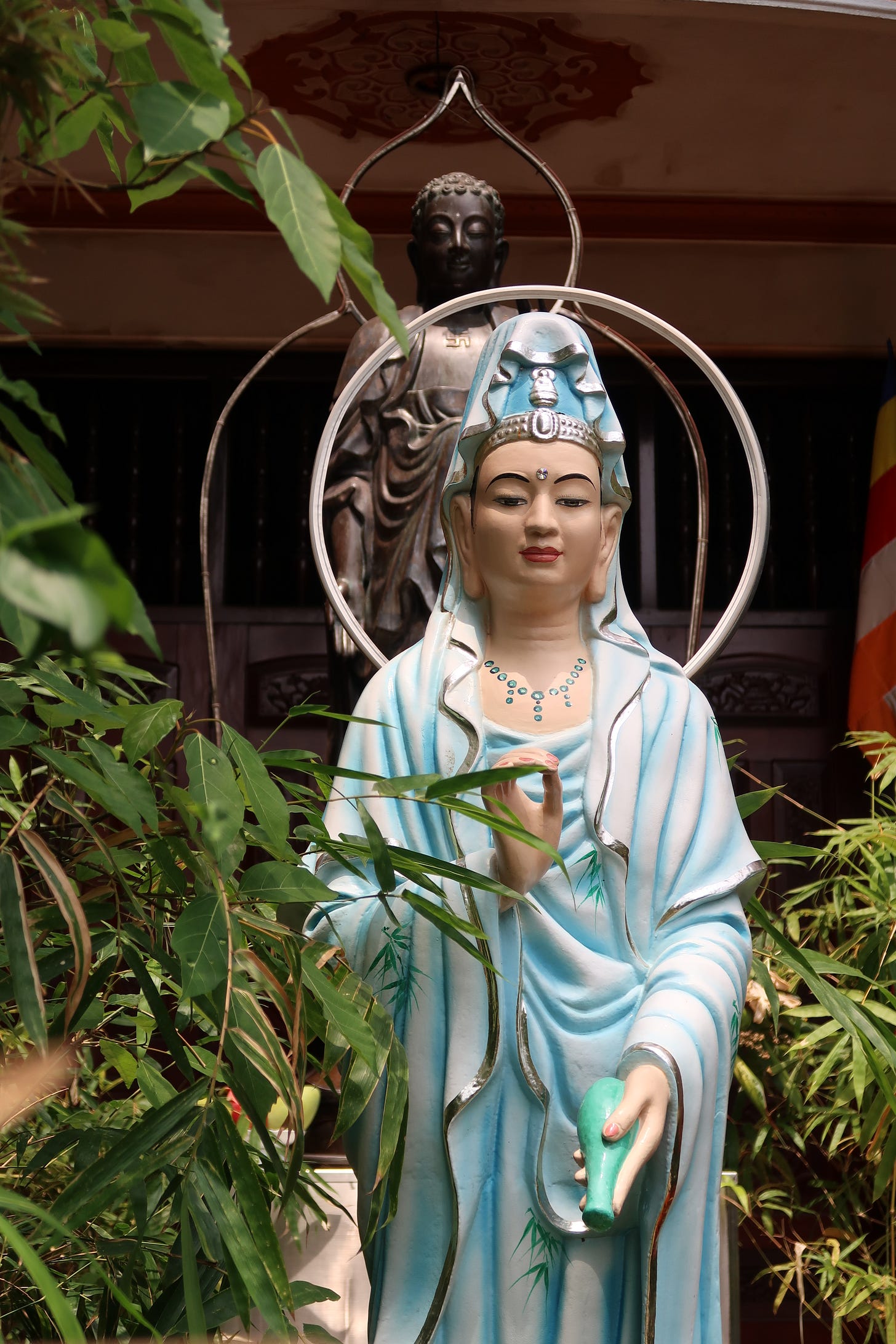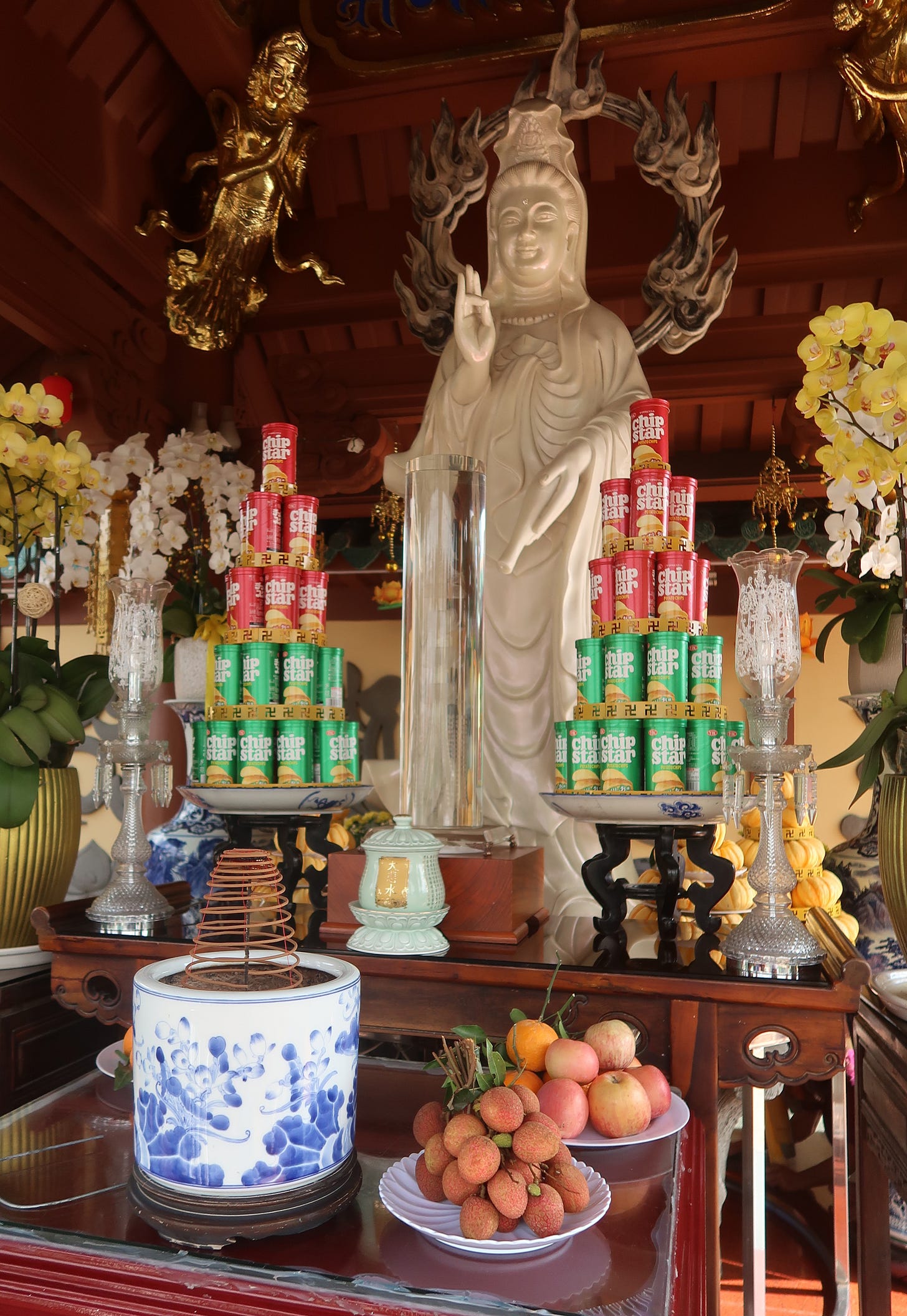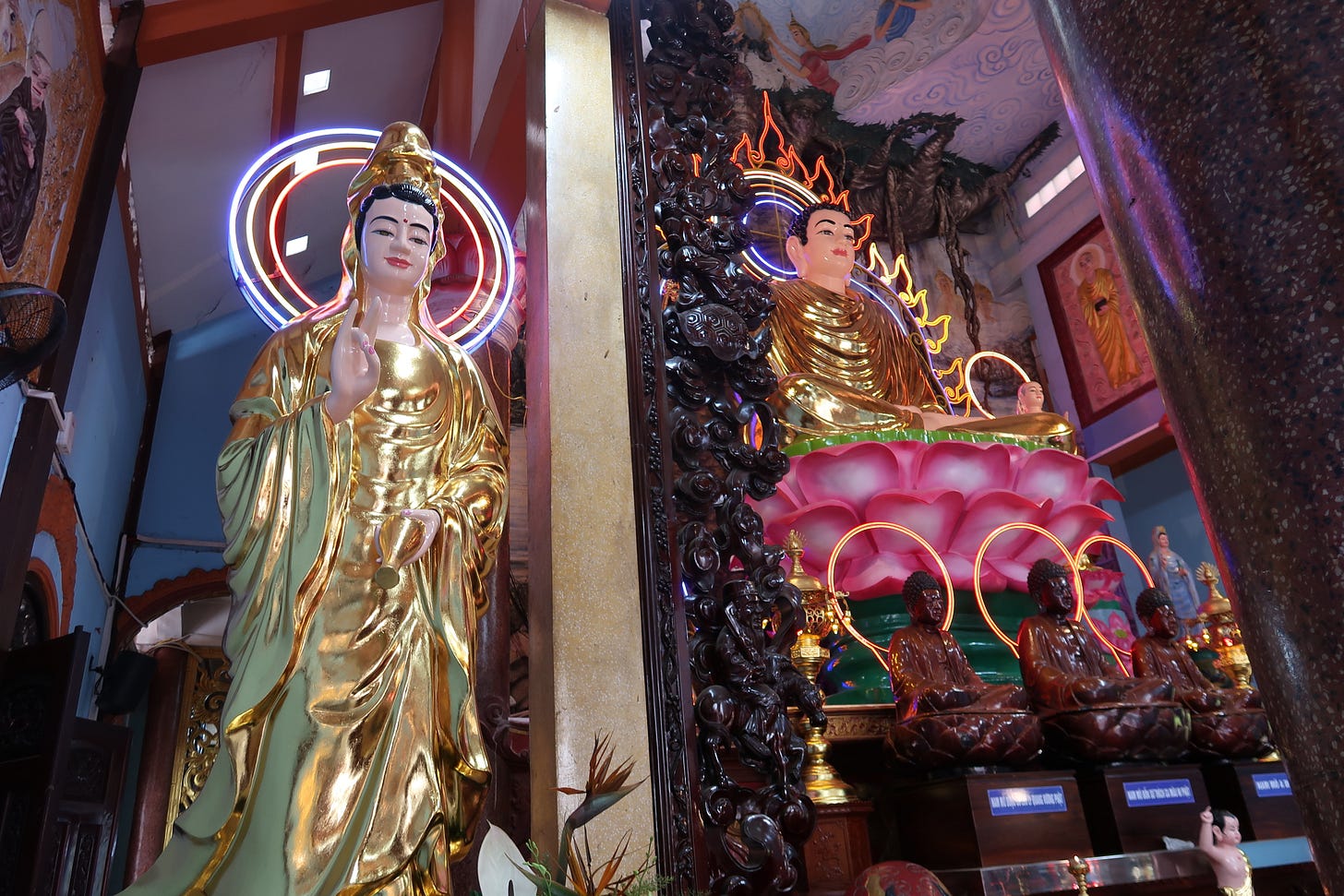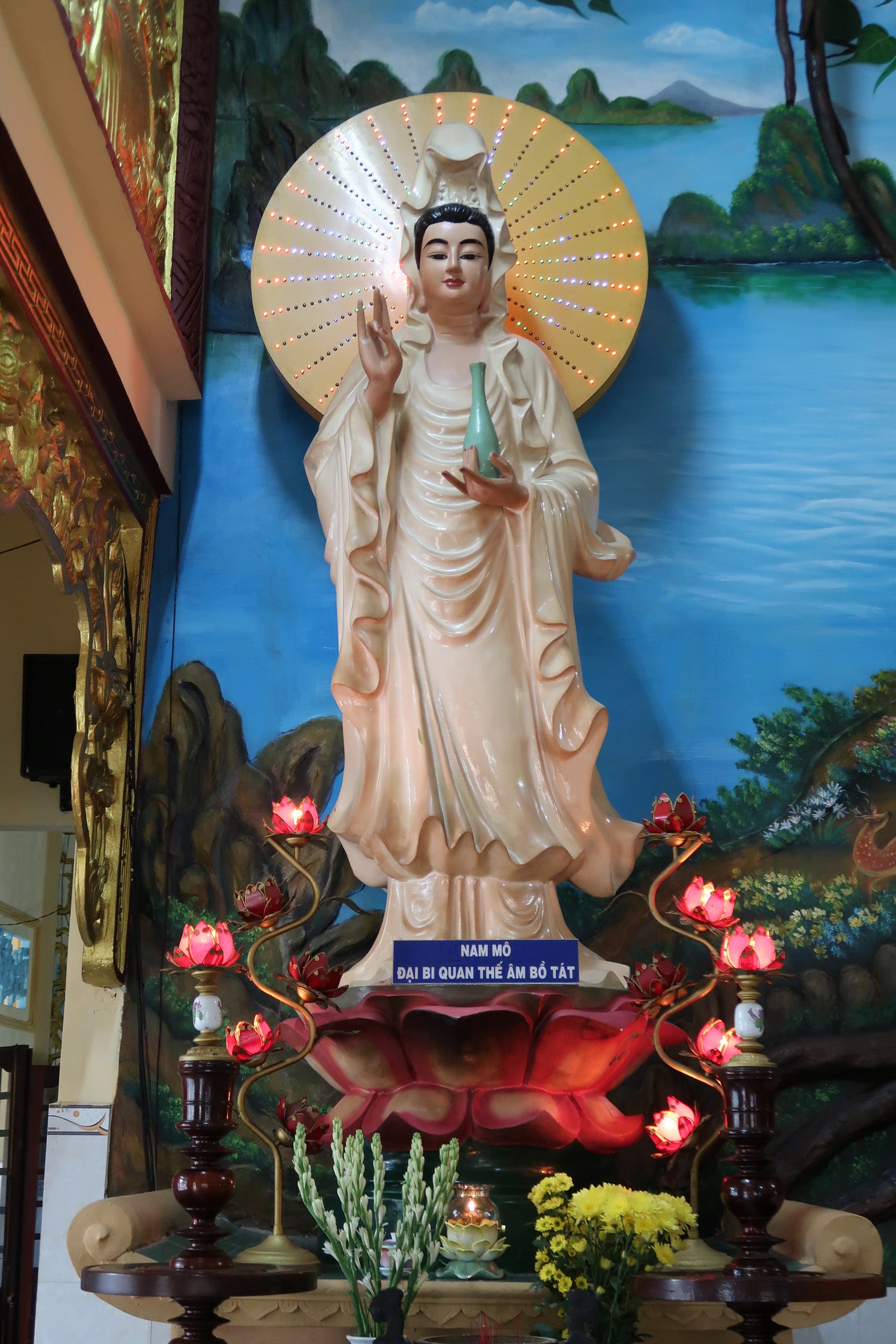I am sorta’ Buddhist, southern style Vietnamese and more into the living than chanting. Actually, I’m more of a Daoist with the Yin-Yang, I Ching and Feng Chui from hanging out with the war-time’s Coconut Monk down on his Mekong River island. That’s OK, however, they are both part of the Three Teachings along with Confucianism for the family which most Vietnamese believe and me too. They’re all on our family altar at home.
But in my older years, I’ve found much solace in Quan Am, or the Buddhist Goddess of Mercy, who’s helped me through so much – most notably a couple years back of finding, then almost losing, and finding again an important lost soul in my life – and a story to come for you here. A lot of grumpiness gone. And she’s still there too.
During the Vietnam War years, religion in the South was very political. In ’63, the Buddhists led the protests against the US-backed regime of President Ngo Dinh Diem, himself a former seminarian and devout Catholic, most notably the self-immolation of several monks. And after that November’s military coup and his assassination, Buddhist leaders continued vying for influence in government, mostly in opposition.
I can’t recall even visiting any Buddhist temples in my 11 years in South Vietnam during the war, not even the hot-bed An Quang Pagoda and its cordon of riot police. We’d send a staffer to pick up the latest media release from the militant bonze Thich Tri Quang who didn’t fare any better after ’75 either.
Off-limits during the war when it was the hot-bed of Buddhist opposition to the Saigon Regime, I always enjoy re-visiting the famous An Quang Pagoda, actually a Temple, in today’s Ho Chi Minh City in District 5, or Cho Lon, with its exquisite worship chamber and ceiling lamps and this beautiful Quan Am, or Goddess of Mercy.
Less appealing at the top of four flights of stairs is this marble Quan Am, fairly common, and beats me why she needs to eat processed tinned corn chips! Still, a great view from here of the temple’s soaring and landmark pagoda, or tower.
So, my induction into Buddhism was more from the lived example of my Mekong Delta wife and family. A Buddhist necklace must be gifted, not purchased, and boy did I get one for what my father-in-law reckoned was a dangerous profession, covering the war. A 200-year-old wild boar’s tooth curved totally round and the size of the palm of my hand, a Buddha carved into its ancient ivory. Specially blessed too at a sacred Buddhist temple on Black Virgin Mountain (Nui Ba Den), a volcanic outcrop northwest of Saigon. Not light either and no problem keeping my head down. And forever more, my wife’s adage going away on a trip, “Don’t forget your tooth!”
Well, the tooth certainly got me out of Vietnam alive. I was a Buddhist but didn’t know much. I certainly wasn’t gonna’ follow exiled Thich Nhat Hanh or don robes in the West’s latest religious fad. It was just there but my interest grew after I began regularly returning to Vietnam after 1995, 20 years after the Fall of Saigon.
I finally ventured into temples, first as must-stops as a tourist – like those in Hue, the old royal capital - and then exploring on my own and learning not only about Buddhism but Vietnam’s other rich folk religions like the Mother Goddess and other mostly female gods. It’s quite a lexicon and fully alive in today’s very spiritual Vietnam. I find immense calm and renewal in visiting temples, where everyone nods hello and makes me feel welcome.
And my learning taught me that wasn’t the Lady Buddha there, often big statues outside temples and many more inside, but a Bodhisattva, a person who’s almost there – Nirvana – and changed her mind to stick around and help us out. And I liked that idea. The Goddess of Mercy. I love seeking her out, lighting incense if I can or simply a wish and a passing prayer.
The Quan Am comes in countless visages both in statuary and images, mostly beautiful and calm but sometimes too severe or poorly made.
At the Quan Am Temple in Saigon’s Chinatown, Cho Lon, I found the statuary not nearly as exquisite as at Vietnamese temples, plus a rather frenetic and paid-for atmosphere of pleadings to the Goddess of Mercy.
I’ll walk right past the huge ones outside temples to explore for them inside, often finding at least one version with a thousand generous arms behind her, but not always. More hidden away.
Typically, the Goddess of Mercy comes standing on a lotus and holds or pours a vase of blessings. Less often, she holds a long-stemmed lotus flower to help the sick.
The worship of Quan Am is particularly strong in southern Vietnam. Along the Mekong River and near the sea, Quan Am is boldly held up by a protective and curling dragon – and surely the most stunning of all to see. She protects all on the water and specially-revered by fishing folks and in those immediate post-war years, the fleeing Boat People.
At a temple in the fishing port of Vam Lang in Go Cong has a lovely Quan Am and Dragon, a protector of those who venture out to sea.
And at a temple along the banks of the Mekong River in Dong Thap Province near the Cambodian Border, the first place I spotted this version of the Quan Am.
And others I have met.
At a small shrine in HCM City’s in Nguyen Du Street, a favourite stop on my morning walks and especially first returning and upon departing Vietnam. The small temple is full of other gods & goddesses I’ll introduce you to later.
A lovely Quan Am hidden away in the corner of a suburban temple from the 1930’s.














